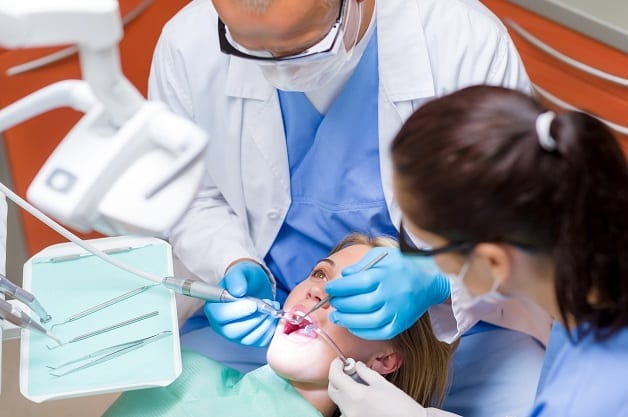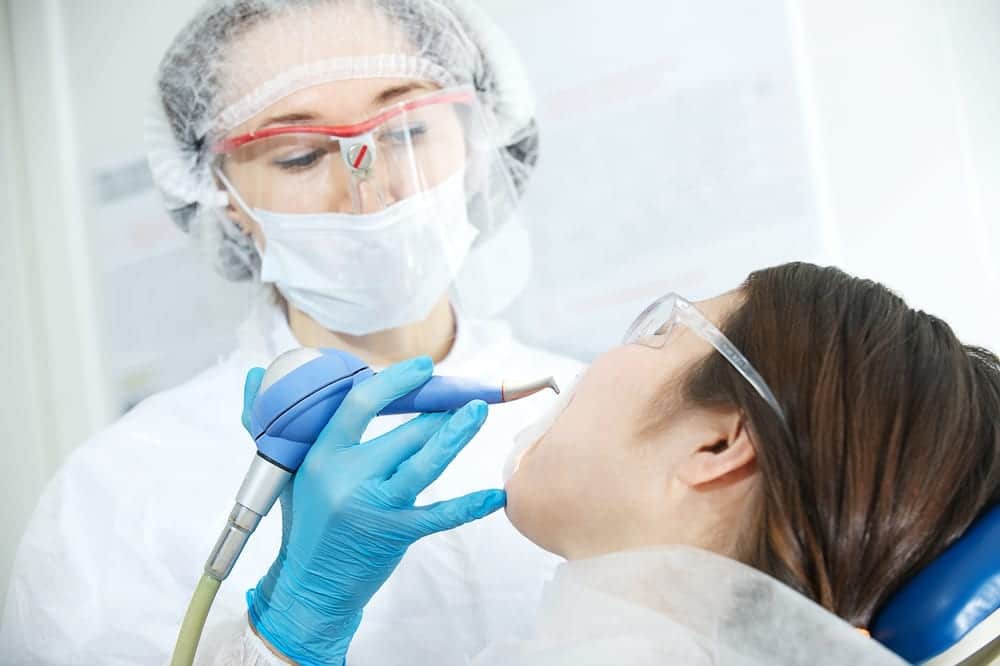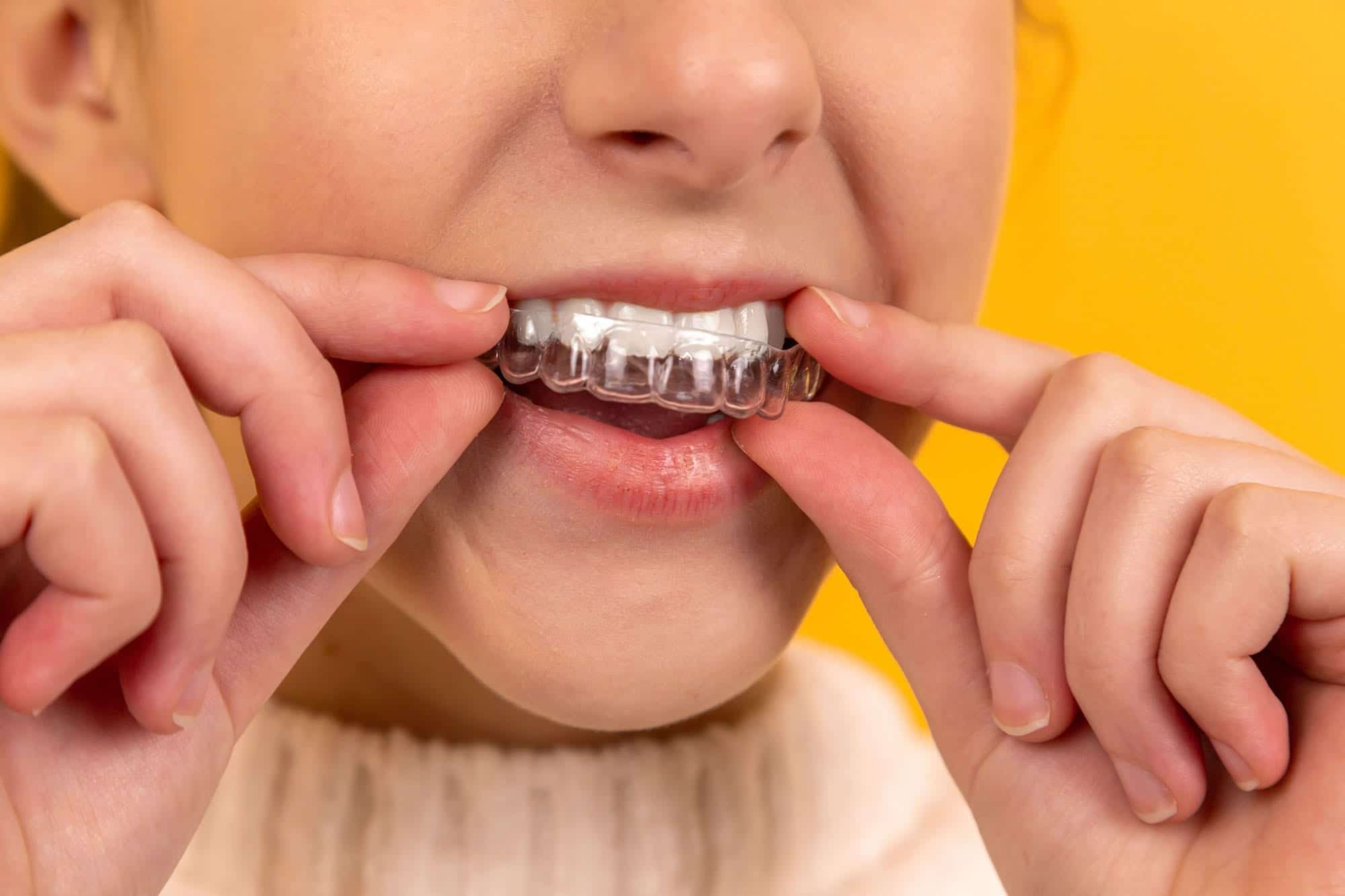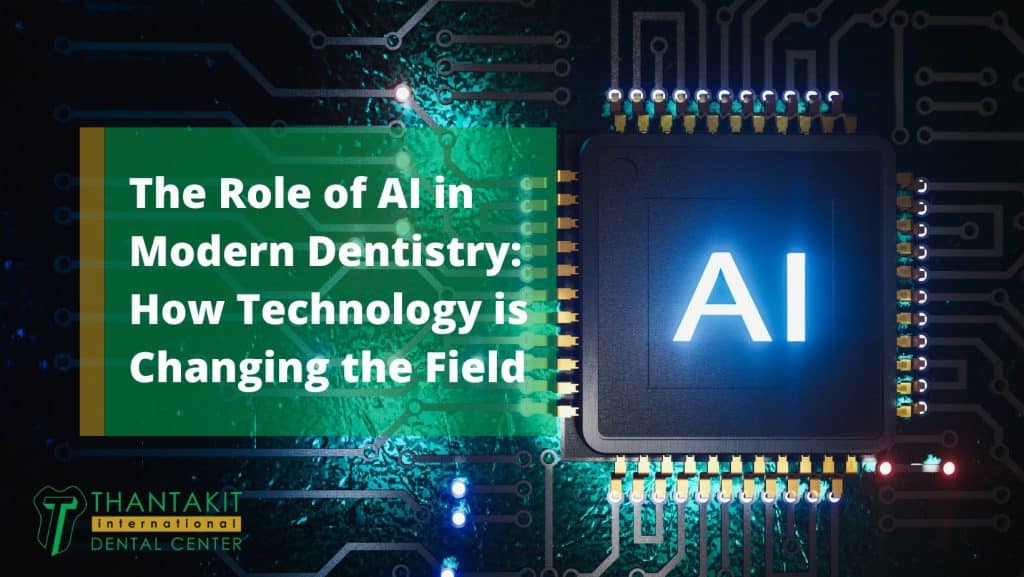Integrating Artificial Intelligence into modern dentistry isn’t a passing fad. It’s arguably as important as the integration of laser or computer technology into the dentistry world.
From the primitive search algorithms of Google to its extensive ability to summarize topics and produce bite-sized information through Grok or ChatGPT, AI has truly come a long way. Once that genie in the bottle has been released, you simply cannot put it back in.
A.I., AI, or Artificial Intelligence, has undergone sweeping advancements in recent years—so much that it’s now strongly impacting on the realm of oral care and dentistry. It has emerged as a powerful tool that’s transforming the field of modern dentistry in more ways than one.
Page Contents
How Artificial Intelligence is a Real Game Changer
Without a doubt, AI is a game changer that has proven its mettle throughout many industries ranging from information technology to graphic design. Even in the realm of dentistry and oral care, its influence certainly applies.
AI is yet another new technology that’s proving its mettle in today’s digital revolution. Because a lot of things nowadays are “smart” (smartphones and smart TVs) and “electronic” (email and e-commerce), it’s only natural that the next step is “AI.”
AI has affected various industries and economic sectors by doing tasks that typically require human touch and oversight. However, what if computers have become smart enough to do these human-only tasks?
At this point, AI can draw like humans, write like humans, summarize like humans, and for years has been excellent at parsing info even better than humans (i.e., the Google search algorithm).
Its introduction to dentistry and oral care isn’t only notable but inevitable, just like how the introduction of the LASER in the 1960s led to laser dentistry today.
Let’s now examine how AI is developing within the oral care industry and how its evolution is impacting the dental profession.

Changing the Way Dental and Oral Care is Delivered
AI’s introduction to dentistry has allowed the industry to deliver new and improved ways to boost patient care management, treatment planning, and diagnostic imaging (which somewhat influences the Digital Smile Design paradigm).
AI techniques like deep learning (DL), machine learning (ML), and neural networks can be used for:
- Planning treatments
- Predicting outcomes
- Making treatment decisions
- Identifying dental conditions
- Forecasting disease progression
AI covers a wide range of tech designed to mimic human intelligence. This doesn’t only include a sorting algorithm, but also ML, computer vision, and natural language processing.
This translates to the following in dentistry terms:
-
Dealing with Patient Management: Dentists can use this state-of-the-art technology to streamline patient management, enhance diagnostic accuracy, and make Digital Smile Design a fulfillable reality.
-
Enhanced Diagnostics and Customized Experience: AI is also something dentists will lean on for diagnostics and restorative procedures. This tech has even helped provide a more customized experience for patients.
-
An Evolving Technology: The role of AI in modern, cutting-edge dentistry is fast becoming pivotal as we speak, with it positively influencing dental practices. To be clear, it’s a tool and not a replacement for human oversight.
-
The Newest Digital Tool: AI is proving to be an important tool that dentists can incorporate as part of their services to improve outcomes and improve the overall patient experience as far as the practice is concerned.
-
The Latest Paradigm Shift: The fundamental shift towards AI is redefining dental and oral care even as this sentence is being written down. It has proven dependable in diagnostics and treatment planning.
The AI approach is proving effective in simplifying complex dentistry cases and outperforming humans when analyzing diverse info, the same way the Google search algorithm outperformed the curated web search of Yahoo.
The role of AI in improving the accuracy of dental imaging and analysis is crucial, especially when it comes to aiding clinical decisions with expanded info.
A Paradigm Shift in Diagnostic Precision and Early Detection
The trailblazing use of AI will likely impact oral care in terms of its precision in detecting trouble early on. Remember the adage, “An ounce of prevention is better than a pound of cure”?
This proves true in dentistry and AI can showcase just how true it is with its role in oral care diagnostics. Traditional diagnostics rely on the experience and expertise of the dentist.
-
Subjective Interpretations Become Objective Analysis: This is perfectly fine in effectively diagnosing issues on a trial-and-error basis that, at times, can lead to subjective interpretations.
With AI, the guesswork becomes more accurate. The symptoms are analyzed closely, and the dentist has more information at his disposal to allow for more accurate analysis by the use of machine-learning algorithms.
-
The Dentist Still Has Oversight: To be clear, the dentist remains in control of the oversight. The data at his disposal is there to cover anything the human eyes or human error might miss.
-
Open Their Eyes to More Possibilities: The algorithm is a tool that allows the dentist to see the likeliest possibilities to offer him a level of analytic precision he’d have to refer to specialists to normally have.
-
AI-Driven Imaging Systems: For example, AI-driven imaging systems can analyze intraoral images, CBCT scans, and dental X-rays with incredible accuracy so that the dentist has immediate info he might normally miss.
The system can be used to detect early signs of oral cancers, periodontal diseases, and even the beginnings of cavities that might be overlooked in routine inspections.
-
Enhancing Preventative Dentistry: AI knowledge is the key to making preventative dentistry more dependable. In this branch of oral care, the goal is more about addressing issues before they escalate into something serious.
You can depend on AI to recognize anomalies and patterns that the dentist might dismiss or wave off when using traditional methods of detection. This makes this technology invaluable when it comes to diagnostic accuracy enhancement.
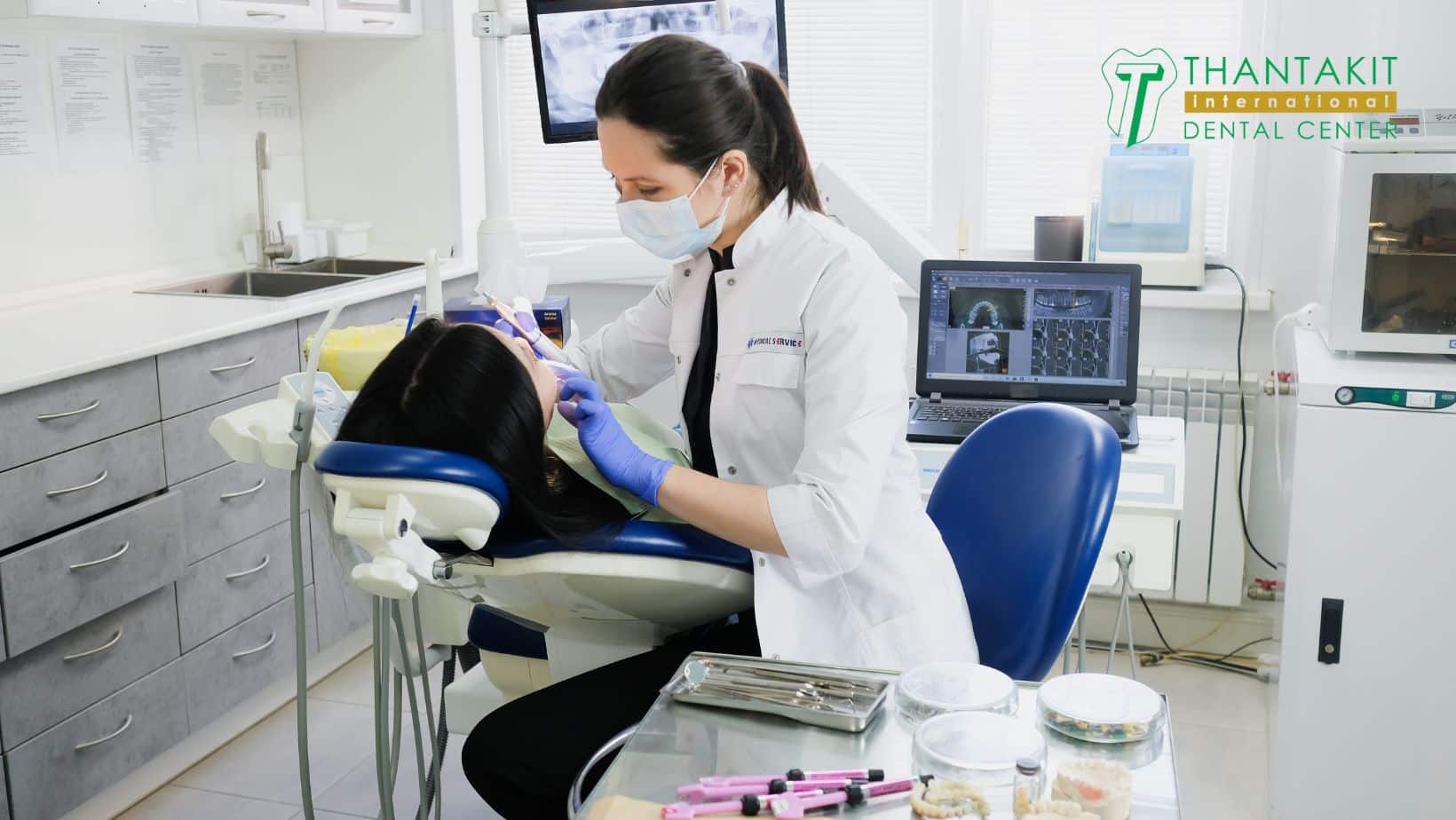
Enhancing Patient Management for Their Convenience
Beyond treatment plans and diagnostics for early detection of existing or even potential dental issues, AI is making huge waves in terms of improving patient management.
What does that mean exactly? Why is there a need for clinics and centers like Thantakit to improve their management of patients?
Integrating AI-powered systems into patient management allows dental centers to streamline their administrative tasks, reduce waiting times, and improve the overall patient experience.
-
Easy Info Access: What’s usually covered by their website, FAQ, and chat can further be enhanced by smart AI that allows patients to easily get their answers on their own, freeing up their staff and crew for more complex tasks.
-
Personalized Advice: AI also makes it easier for patients to access resources and personalized advice from the website without having them need to dig far.
Most of the proverbial leg work is done by AI at the convenience of the patients and their individual needs.
-
Quicker Turnaround: Automation of patient management makes it easier for patients to get efficient and effective treatment as a quicker turnaround, leading to better patient satisfaction that doesn’t test their patience.
-
Service Optimization: AI can adeptly analyze patient data to predict trends, patterns, and even disease progression. This helps the patients correct as required by anticipating future needs and accordingly optimizing their services.
-
Predictive Ability: With enough data fed into it, the AI can offer a predictive ability in what exact treatment is needed for the patient in light of their health, scans, and present diagnosis.
In terms of patient management, the AI can use that info to help with inventory organization, staffing, marketing strategies, and so forth so that every clinic and center is prepared to meet patient demands and needs immediately.
Incorporating AI can help any given dental clinic improve their already superb services with the addition of virtual assistants and AI chatbots that handle follow-up reminders, appointment scheduling, and routine inquiries.
Customizing Care to Individual Needs with Custom Treatment Plans
Artificial Intelligence has also revolutionized the development of treatment plans. Before AI, treatments were usually recommended instead of planned. Nothing was set in stone because more guesswork was involved.
Dentists adopted a more “wait and see” approach to their treatment based on standardized protocols that might not account for the unique needs of every patient.
It’s a one-size-fits-all solution where outliers are treated like square pegs being forced into a round hole. AI allows more customization of treatment.
The more customized the treatment, the better the treatment plans end up becoming. For example:
-
Patient Response: Without AI assistance, multiple patients necessitate streamlined treatment. With AI assistance, dentists can predict how specific patients respond to different treatments, allowing for custom treatments.
-
Why Custom Treatments? Tailoring interventions for patient specifics ensures better outcomes and less trial-and-error on which standardized treatment you should take, especially when it comes to preventative dentistry.
-
A Satisfactory Experience Guaranteed: The simple addition of AI systems enables dentists to simulate various treatment scenarios instead of trying treatments out on you on their best guess based on past experience.
-
Mutual Understanding Between Doctor and Patient: AI-enhanced treatments like the Digital Smile Design allow both the dentist and his patient to visualize the potential results of every option available to get the best “smile design.”
-
A Technology-Driven Approach: This tech-driven approach simplifies complex procedures in digestible info, so it’s easy to screen whether a patient is a viable implantology or orthodontics candidate with amazing precision.
-
AI Is Critical to Patient Success: AI’s offerings when it comes to ensuring precise planning with the best possible scenario (in light of not only the available services but also the patient’s viability for them) are critical to patient success.
Patients get more value in their investment in a dental clinic—or even dental tours in Bangkok, Thailand where every dental treatment is more affordable—by taking into account their genetic predispositions, medical history, and lifestyle choices.
AI algorithms allow dentists to create highly customized treatment plans that consider multiple factors normally waved off to simplify the procedures.
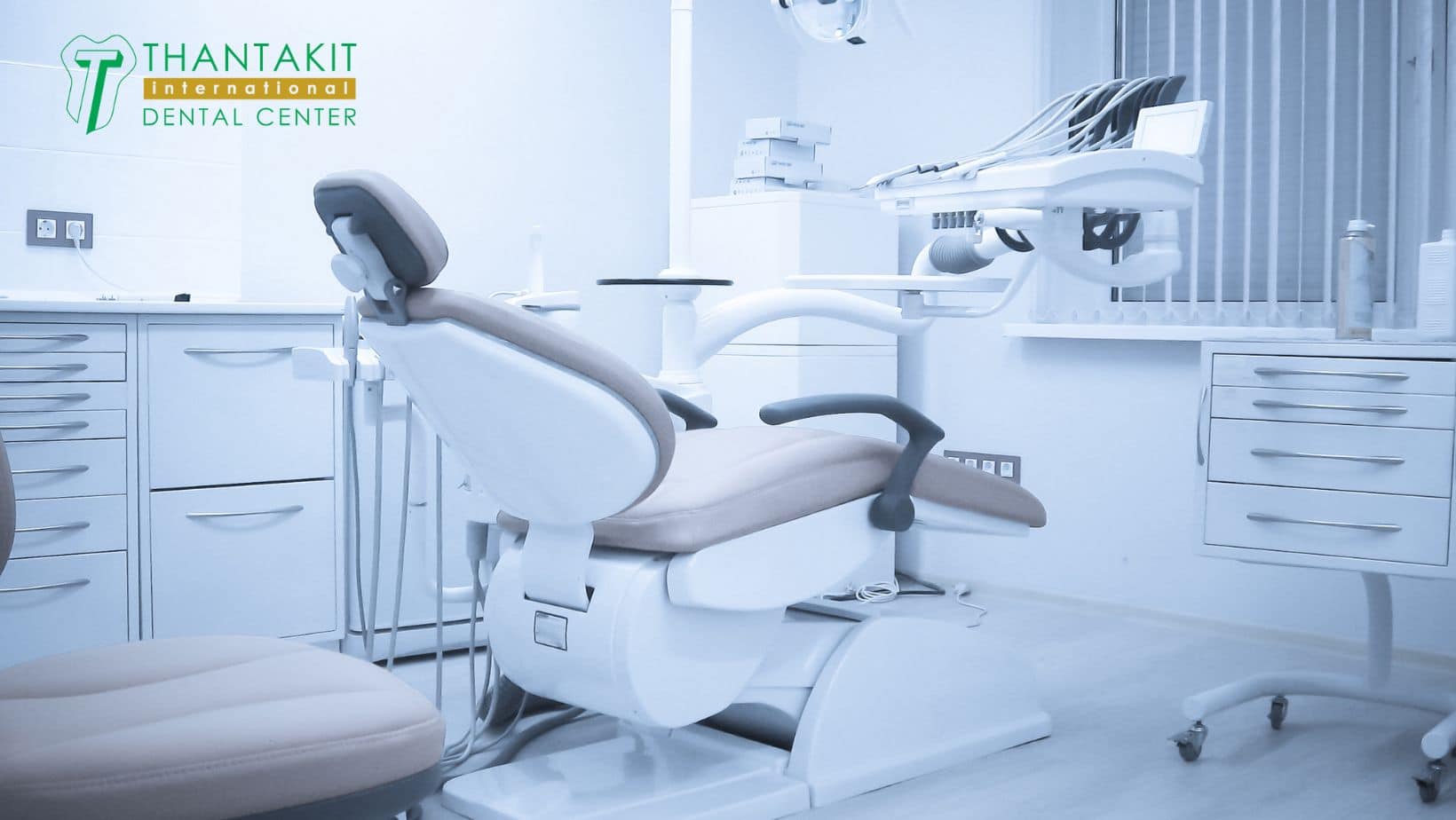
AI in Restorative Dentistry Ensures Innovative Precision
AI has made a substantial impact in the realm of restorative dentistry as well. How so? It’s like this. AI can be used to create dental restorations.
Mouth scans can be fed into AI, and you’ll get efficient, precise, and perfect-fitting crowns, bridges, and veneers afterward. You can still have the doctor add his artistic touch or flair to it, but for the most part, the AI has your back.
-
AI-Driven CAD/CAM: Even before AI, people have been getting single-day restorations or even full-arch reconstructions using Computer-Aided Design (CAD) and Computer-Aided Manufacturing (CAM) anyway, but now with an AI twist.
-
Previous Data Plus Custom Data: Using previous patient data for restorative dentistry and mixing it with current customized treatment plans, a sufficiently advanced AI can design and fabricate excellent restorations.
-
Minute Details of the Oral Anatomy: The AI takes into account the minute details of the patient’s oral anatomy to ensure a perfect fit and full functionality. The dentist is also there as human oversight to correct any errors.
-
Digital Smile Design: The resulting restorations precisely fit with the patient’s mouth while coming out as aesthetically pleasing too based on the past restorations done in similar cases. It’s Digital Smile Design (DSD) in action.
-
Material Development: AI can also help in developing new materials for restorations, optimizing them for biocompatibility, durability, and aesthetics. Such innovations are setting new standards of quality for this branch of dentistry.
There you have it. Even when it comes to restorative dentistry, AI can be incorporated with CAD, CAM, and DSD to streamline and optimize every aspect of restoring your smile and your dental function in more ways than one.
AI solutions don’t only (literally) enhance the appearance of your smile; they restore the function of your teeth and mouth. To what extent? It mostly depends on how much restoration your mouth needs.

Balancing Technology and Human Oversight
Although AI’s potential to help with dentistry is through the roof, dentists still need to step on the brake pedal and consider important ethical considerations.
AI shouldn’t replace human intelligence and common sense. Ethically and practically, AI should be used as a tool rather than a replacement for dentist decision-making. The dentists are still there to ultimately make the final call.
AI shouldn’t replace human judgment in critical dental care areas. What they should be used for instead is keeping the patient on the same page as the dentist.
Instead of blindly trusting his care in the good hands of an expert dentist, AI-driven DSD or CAD/CAM can be used to run simulations on what to expect.
AI should be used for:
- Processing data
- Identifying patterns
- Instantly delivering information
- Presenting info that the dentist might miss
- Make it easier and faster to process patients
- Digest and summarize data in an understandable way
AI shouldn’t be used for:
- Decision-making
- Automation with zero human oversight
- As a replacement for a doctor’s diagnosis
- Imbalanced usage bordering on overdependence
- Diagnosis on its own without dentist confirmation
- Nuanced, empathetic understanding of the patient’s condition
As a rule of thumb, patients should search for dental professionals who use AI in a way that strikes a balance between AI reliance and the human touch that’s essential for empathetic patient-centered care.
You can’t program common sense, reason, or care into AI—that’s still the dentist’s call. AI is a tool that enhances, not replaces, the dentist’s capabilities.
By integrating AI into any given practice in a thoughtful and ethical manner, dentists the world over can offer the best of both worlds to their patients: Cutting-edge technology combined with personalized, compassionate dental care.
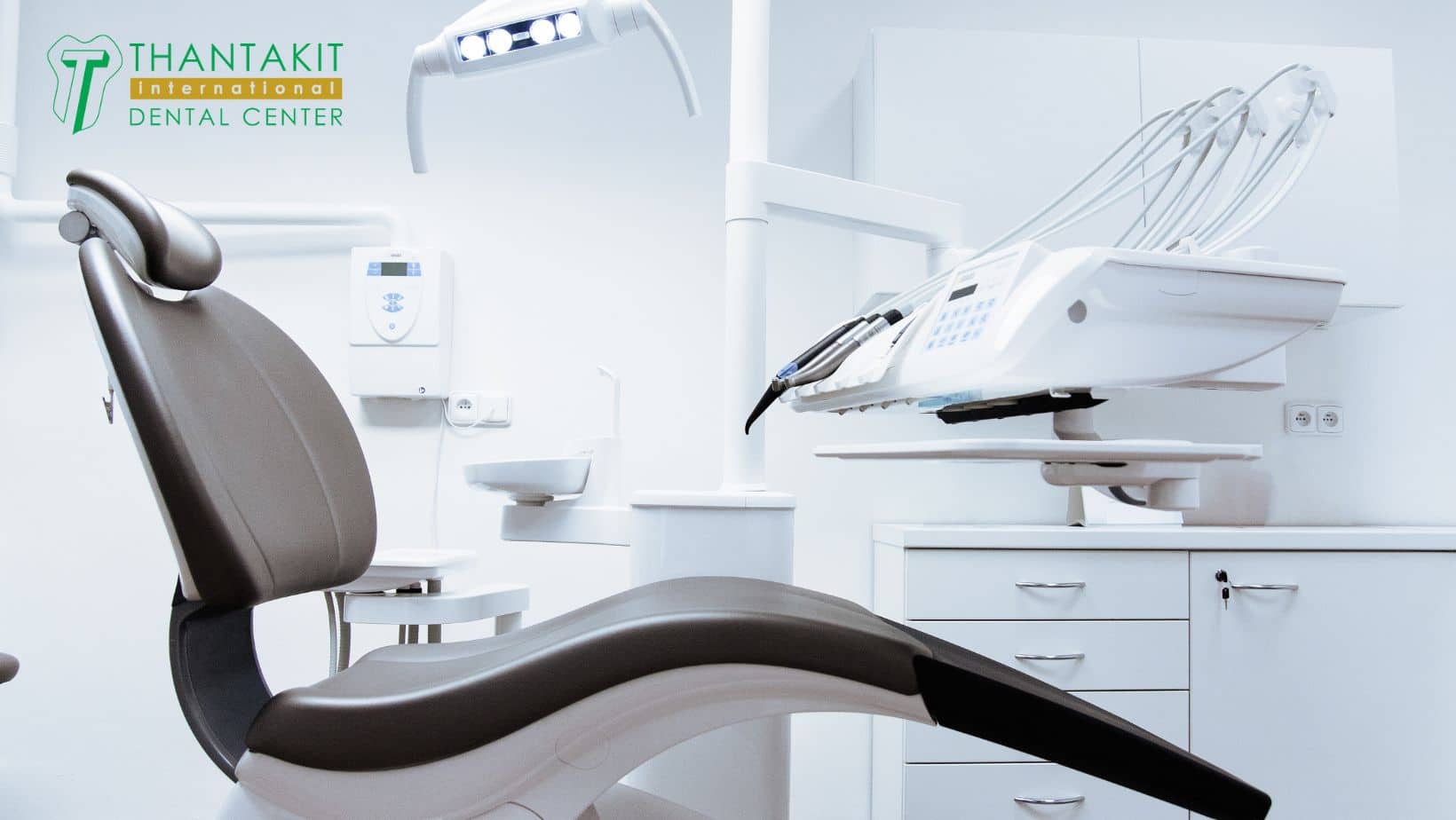
Experience The Latest in Dentistry Technology at Thantakit
If you’re searching for the best dental tourism providers in Bangkok, you won’t go wrong with us here at Thantakit Dental Center.
We understand how AI is reshaping the dental landscape in more ways than one. This is why we’re adopting a future-ready approach that will make use of this new tech to its fullest potential.
You can trust Thantakit Dental Center to be on top of this trend in the coming years because it’s not only a great source of affordable dental implants and orthodontics—it’s also on the cutting-edge of the latest patient-focused dentistry advancements!
Thantakit International Dental Center is Thailand’s longest established dental center. Situated in Bangkok, our clinic is renowned across the world as a destination for world-class dentistry, with most of our patients flying to us from Australia.
Get in touch with our clinic today and get FREE dental consultation!



